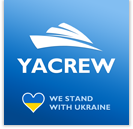RYA Powerboat Level 2
€300 EUR
- Course Type:
- RYA Powerboat Level 1-3
- Training School:
- The Seamanship Centre
- Location:
- Killybegs Harbour, County Donegal, Ireland
- Duration:
- 2 days
- Language:
- English
DAY 1
1000 Meet beside boat at top of slipway, have introductions and discuss any special medical or dietary needs. Discuss student’s ability to swim and water confidence. Discuss the tides and weather forecast for the day.
1015 Prepare for launching. Allow bearings to cool. Remove lightboard, straps, prop. bag. Check levels. Have warps prepared. Consider the following:
State of the slipway and your right to use it, the tide, wind, surrounding dangers, method of launching, is everyone clear? What to do when boat is afloat.
1030 Launch boat. Back down or surge down. Keep uninvolved personnel clear. Allocate tasks. Park vehicle and trailer safely. Get students into boat wearing PFDs. Secure to quay, discuss trim and loading, run and check engine, make TR call.
1100 Prepare to move away from the quay. Stow gear, engine running correctly, killcords used, consider local dangers, consider other water users, discuss lookout and manoeuvring announcements, discuss pivot point – whether back or drive away from the quay, the use of warps in onshore winds. The need for the helm to brief the crew.
1115 Manoeuvring. Low speed, reversing, turning, MOB practice, higher speed “S” turns and “U” turns (importance of looking before turning and manoeuvring announcements) and the use of the throttle and engine trim during a higher speed turn.
1215 Securing to a buoy. Preparation and briefing. Note how wind and tide affects other moored boats. Have a plan and a “bail out” plan. Make ready warps and boathook. Consider point from which to make controlled approach. When moored consider ropework and chafe. Considerations when leaving the mooring.
1300 Secure alongside for lunch. Consider ropework and the use of cleats (mooring lines, springs, fenders and the rise or fall of the tide whilst the boat is alongside).
1400 Back aboard. Manoeuvres for coming alongside with different wind and tide directions, manoeuvres leaving an alongside berth, manoeuvres in confined spaces.
1600 Anchoring. Selection of an anchorage, techniques for anchoring and how to establish that the anchor is holding. Considerations when leaving an anchorage. Tide.
1630 Recover the boat or moor her off or secure her to a quay.
1700 Finish for the day.
DAY 2
1000 Meet at the boat, Discuss tides and weather for the day, check engine, discuss engines and drives and the types of boats they might be installed in, possible engine or machinery problems and what we can do about them. Discuss situations that could disable our boat and how to deal with situation. Have a ropework session.
1130 Man Overboard. Prevention of MOB. In event of a MOB crew briefing, wind direction awareness, boat manoeuvres, recovery, assessment of casualty (cold shock, hypothermia, injury), treatment of the casualty, calling for help, med-evac.
1300 Come alongside for lunch.
1400 Towing and being towed, vessel and personnel safety.
1500 Recover the boat.
1515 Theory session with charts and publications and a session on IRPCS.
GENERAL
As our courses are run in coastal waters, tides are considered throughout the course and collision avoidance as and when situations present themselves.

The Seamanship Centre
The Seamanship Centre
Killybegs Harbour
County Donegal
F94 V8 WH
Ireland
